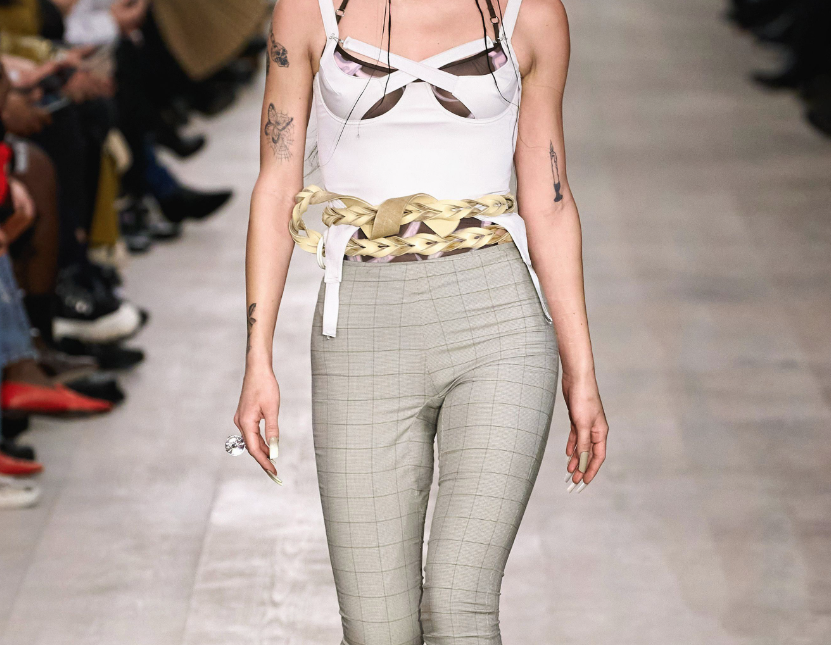
Whether you're inspired by a 17th-century English king, Yves Saint Laurent's 1960s smoking outfit, or Maria Grazia Chiuri's Autumn-winter 2019 Alfy girly vintage look.
The three-piece suit (top, trousers and waistcoat) was first introduced to England in 1666 by King Charles II. Men had long worn a variety of trousers and jackets, but the "Jolly King," as he was known, introduced a third element - the vest - to boost the English wool trade and force the aristocracy to abandon French fashion.
On October 8, 1666, the statesman Samuel Pepys left a detailed diary that he had kept from 1660 to 1669, and on October 8, 1666, he wrote, "The King announced yesterday in Parliament a resolution on the setting of a style of dress, which he will never change." It will be a waistcoat, I don't know how to wear it, but it will teach noble men to be thrifty, and it will do them good."
The new vest is a tight knee-length piece that aligns with the line of the coat and is worn underneath. It is made from a plain-patterned, low-cost material designed to discourage the use of expensive lace and muslin, which were previously worn under men's jackets.
Nine days later, Pepys wrote that "the court is full of waistcoats" and arranged a meeting with his own tailor. Charles II's rival, King Louis XIV of France, even ordered his servants to wear vests to belittle the new English style.
While King Charles II favored plain black velvet vests, some wore ornately embroidered vests. French courtiers also quickly adopted the new style, especially the silk vests with rich trim and embroidery.
By 1700, the silhouette of the waistcoat had been shortened and simplified - reaching just above the knee and no longer having a collar or sleeves. Over the next century, the waistcoat became an increasingly decorative, showy, and varied component of the three-piece suit.
The rise of Dandy wind
The three-piece suit was transformed in the 19th century by a group of playboys such as upper-class captain Beau Brummell, who befriends the Prince of Wales. Brummell eschews flashy (and expensive) breeches and stockings in favor of understatement but perfectly tailored pants, a white waistcoat and a black tuxedo.
By the end of the 19th century, the three-piece suit for men had become more dignified, representing seriousness and reason, while the three-piece suit for women was the opposite, considered frivolous and irrational. At the beginning of the century, waistcoats were made from different fabrics and colors than overcoats, but as time went on, cutting waistcoats from the same fabric became popular.
Starting in the mid-20th century, the three-piece suit was gradually phased out in favor of the more casual blazer (coat and pants). When men began to wear watches, the waistcoat used to hold the pocket watch was no longer practical. By the end of World War II, the three-piece suit was no longer the norm for office workers, but a statement of novel fashion. However, on formal occasions, it is still a must for dress etiquette.
A lady's vest
In the 1950s, this three-piece suit was no longer worn by the mainstream society, but was freely adopted as a decoration by Teddy boys or Teds in the UK. A subculture made up mostly of wealthy young men, the Alafies have a penchant for American rock and roll and the New Edwardian Savile Row three-piece suit.
The uniforms of the Alffy teens are a pleated jacket, similar to the Zoot suits (high-waisted bloomers and brocade vests) of the 1940s. The girls also loved the look, including the vest.
It was Hollywood actress Marlene Dietrich, however, who was the real trendsetter, having shot to fame in the 1920 film Morocco, 20 years before the alafies, thanks in part to her role as a tuxedo-wearing character.
In 1966, Yves Saint Laurent shocked the fashion world with his Le Smoking suit, popularizing women's two-piece and three-piece suits. Dietrich was forced to tailor his own men's clothes, while Yves Saint Laurent tailored suits specifically for women.
Although Dietrich's suit created a wave when it appeared on screen, the style was not popular with women at the time. Yet Saint Laurent's smoking outfits helped women - first the elite, then the middle class - adapt to dressing in a style traditionally seen as menswear.
The advent of disco in the 1970s also brought a brief interlude: witness John Travolta's classic appearance in Saturday Night Fever, wearing a black shirt over a white suit.
The brightly colored three-piece suit quickly became the go-to choice for the disco crowd. By the 1980s, well-tailored pants were also embraced by professional women. While some people wear a vest or vest, most prefer a two-piece suit with a shirt.
Today, the three-piece suit is fully accepted by couturiers; Thom Browne released a version featuring a distinctive silhouette; Maria Grazia Chiuri's Autumn/Winter 2019 collection for Dior paid tribute to the neutral plot of Alfy girls.

